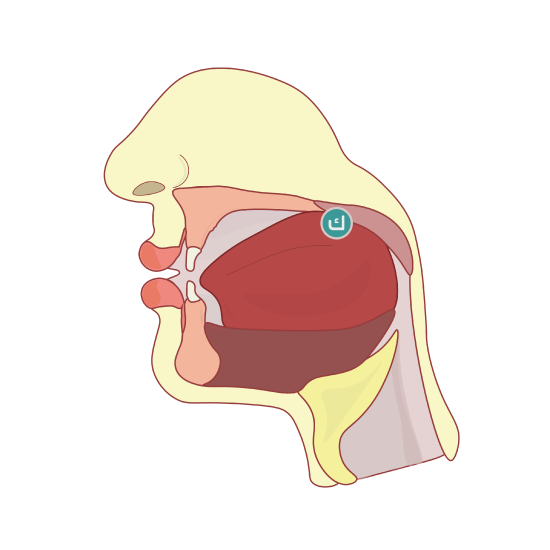9.3: Letter Kaaf
- Page ID
- 273345
\( \newcommand{\vecs}[1]{\overset { \scriptstyle \rightharpoonup} {\mathbf{#1}} } \)
\( \newcommand{\vecd}[1]{\overset{-\!-\!\rightharpoonup}{\vphantom{a}\smash {#1}}} \)
\( \newcommand{\dsum}{\displaystyle\sum\limits} \)
\( \newcommand{\dint}{\displaystyle\int\limits} \)
\( \newcommand{\dlim}{\displaystyle\lim\limits} \)
\( \newcommand{\id}{\mathrm{id}}\) \( \newcommand{\Span}{\mathrm{span}}\)
( \newcommand{\kernel}{\mathrm{null}\,}\) \( \newcommand{\range}{\mathrm{range}\,}\)
\( \newcommand{\RealPart}{\mathrm{Re}}\) \( \newcommand{\ImaginaryPart}{\mathrm{Im}}\)
\( \newcommand{\Argument}{\mathrm{Arg}}\) \( \newcommand{\norm}[1]{\| #1 \|}\)
\( \newcommand{\inner}[2]{\langle #1, #2 \rangle}\)
\( \newcommand{\Span}{\mathrm{span}}\)
\( \newcommand{\id}{\mathrm{id}}\)
\( \newcommand{\Span}{\mathrm{span}}\)
\( \newcommand{\kernel}{\mathrm{null}\,}\)
\( \newcommand{\range}{\mathrm{range}\,}\)
\( \newcommand{\RealPart}{\mathrm{Re}}\)
\( \newcommand{\ImaginaryPart}{\mathrm{Im}}\)
\( \newcommand{\Argument}{\mathrm{Arg}}\)
\( \newcommand{\norm}[1]{\| #1 \|}\)
\( \newcommand{\inner}[2]{\langle #1, #2 \rangle}\)
\( \newcommand{\Span}{\mathrm{span}}\) \( \newcommand{\AA}{\unicode[.8,0]{x212B}}\)
\( \newcommand{\vectorA}[1]{\vec{#1}} % arrow\)
\( \newcommand{\vectorAt}[1]{\vec{\text{#1}}} % arrow\)
\( \newcommand{\vectorB}[1]{\overset { \scriptstyle \rightharpoonup} {\mathbf{#1}} } \)
\( \newcommand{\vectorC}[1]{\textbf{#1}} \)
\( \newcommand{\vectorD}[1]{\overrightarrow{#1}} \)
\( \newcommand{\vectorDt}[1]{\overrightarrow{\text{#1}}} \)
\( \newcommand{\vectE}[1]{\overset{-\!-\!\rightharpoonup}{\vphantom{a}\smash{\mathbf {#1}}}} \)
\( \newcommand{\vecs}[1]{\overset { \scriptstyle \rightharpoonup} {\mathbf{#1}} } \)
\( \newcommand{\vecd}[1]{\overset{-\!-\!\rightharpoonup}{\vphantom{a}\smash {#1}}} \)
\(\newcommand{\avec}{\mathbf a}\) \(\newcommand{\bvec}{\mathbf b}\) \(\newcommand{\cvec}{\mathbf c}\) \(\newcommand{\dvec}{\mathbf d}\) \(\newcommand{\dtil}{\widetilde{\mathbf d}}\) \(\newcommand{\evec}{\mathbf e}\) \(\newcommand{\fvec}{\mathbf f}\) \(\newcommand{\nvec}{\mathbf n}\) \(\newcommand{\pvec}{\mathbf p}\) \(\newcommand{\qvec}{\mathbf q}\) \(\newcommand{\svec}{\mathbf s}\) \(\newcommand{\tvec}{\mathbf t}\) \(\newcommand{\uvec}{\mathbf u}\) \(\newcommand{\vvec}{\mathbf v}\) \(\newcommand{\wvec}{\mathbf w}\) \(\newcommand{\xvec}{\mathbf x}\) \(\newcommand{\yvec}{\mathbf y}\) \(\newcommand{\zvec}{\mathbf z}\) \(\newcommand{\rvec}{\mathbf r}\) \(\newcommand{\mvec}{\mathbf m}\) \(\newcommand{\zerovec}{\mathbf 0}\) \(\newcommand{\onevec}{\mathbf 1}\) \(\newcommand{\real}{\mathbb R}\) \(\newcommand{\twovec}[2]{\left[\begin{array}{r}#1 \\ #2 \end{array}\right]}\) \(\newcommand{\ctwovec}[2]{\left[\begin{array}{c}#1 \\ #2 \end{array}\right]}\) \(\newcommand{\threevec}[3]{\left[\begin{array}{r}#1 \\ #2 \\ #3 \end{array}\right]}\) \(\newcommand{\cthreevec}[3]{\left[\begin{array}{c}#1 \\ #2 \\ #3 \end{array}\right]}\) \(\newcommand{\fourvec}[4]{\left[\begin{array}{r}#1 \\ #2 \\ #3 \\ #4 \end{array}\right]}\) \(\newcommand{\cfourvec}[4]{\left[\begin{array}{c}#1 \\ #2 \\ #3 \\ #4 \end{array}\right]}\) \(\newcommand{\fivevec}[5]{\left[\begin{array}{r}#1 \\ #2 \\ #3 \\ #4 \\ #5 \\ \end{array}\right]}\) \(\newcommand{\cfivevec}[5]{\left[\begin{array}{c}#1 \\ #2 \\ #3 \\ #4 \\ #5 \\ \end{array}\right]}\) \(\newcommand{\mattwo}[4]{\left[\begin{array}{rr}#1 \amp #2 \\ #3 \amp #4 \\ \end{array}\right]}\) \(\newcommand{\laspan}[1]{\text{Span}\{#1\}}\) \(\newcommand{\bcal}{\cal B}\) \(\newcommand{\ccal}{\cal C}\) \(\newcommand{\scal}{\cal S}\) \(\newcommand{\wcal}{\cal W}\) \(\newcommand{\ecal}{\cal E}\) \(\newcommand{\coords}[2]{\left\{#1\right\}_{#2}}\) \(\newcommand{\gray}[1]{\color{gray}{#1}}\) \(\newcommand{\lgray}[1]{\color{lightgray}{#1}}\) \(\newcommand{\rank}{\operatorname{rank}}\) \(\newcommand{\row}{\text{Row}}\) \(\newcommand{\col}{\text{Col}}\) \(\renewcommand{\row}{\text{Row}}\) \(\newcommand{\nul}{\text{Nul}}\) \(\newcommand{\var}{\text{Var}}\) \(\newcommand{\corr}{\text{corr}}\) \(\newcommand{\len}[1]{\left|#1\right|}\) \(\newcommand{\bbar}{\overline{\bvec}}\) \(\newcommand{\bhat}{\widehat{\bvec}}\) \(\newcommand{\bperp}{\bvec^\perp}\) \(\newcommand{\xhat}{\widehat{\xvec}}\) \(\newcommand{\vhat}{\widehat{\vvec}}\) \(\newcommand{\uhat}{\widehat{\uvec}}\) \(\newcommand{\what}{\widehat{\wvec}}\) \(\newcommand{\Sighat}{\widehat{\Sigma}}\) \(\newcommand{\lt}{<}\) \(\newcommand{\gt}{>}\) \(\newcommand{\amp}{&}\) \(\definecolor{fillinmathshade}{gray}{0.9}\)In this section, you will be able to:
- Read and write ك in its different shapes.
- Pronounce the letter ك with short and long vowels.
Introduction
The Arabic letter ك (pronounced "Kaaf") is the twenty-second letter of the Arabic alphabet. It is equivalent to the letter "K" in the English alphabet and shares a similar pronunciation. The sound is produced by pressing the back of the tongue against the soft palate, creating a clear and crisp consonant. The letter ك is fundamental in Arabic phonetics and appears frequently in both written and spoken forms.
Learning to recognize and write these forms is crucial for Arabic learners, as it helps in understanding the structure and flow of Arabic text. The letter ك is commonly found in many everyday words, such as كتاب (kitaab, meaning "book"), كبير (kabeer, meaning "big"), and مكان (makaan, meaning "place"). Mastering the pronunciation and usage of ك will enhance your ability to read, write, and speak Arabic accurately.
The Letter Kaaf
This letter corresponds to English “k”. ك represents a familiar sound that takes no extra effort on your part. The articulation place of the letter ك is the tongue.
The letter ك is articulated from the deepest part of the tongue and what lies opposite to it from the roof of the mouth in the area of the hard palate.
The letter ك is closer to the mouth and farther from the throat than the letter ق. Remember that ق is an emphatic letter that deepens the quality of surrounding vowels, whereas vowels surrounding ك are frontal. ك is often mispronounced at an articulation point further back in the mouth rather than the correct articulation point, resulting in a sound closer to the letter ق.

Pronunciation of letter Kaaf "ك" with short vowels الحركات and absence of short vowels السكون.
| The Marks (Harakat الحركات) | The Letter with the mark | Audio |
|---|---|---|
|
Fataha الفتحة |
كَ |
|
|
Dhama الضمة |
كُ |
|
|
Kasra الكسرة |
كِ |
|
|
Absence of short vowel Sukoon السكون |
كْ |
|
Pronunciation of the letter Kaaf "ك" with long vowels.
| The Long Vowel المدود | The Letter with a long vowel | Audio |
|---|---|---|
|
The long vowel "ا"=aa |
كا |
|
|
The long vowel "و"= oo/uu |
كو |
|
| The long vowel "ي"=ee/ii | كي |
|
How to Write The Letter Kaaf
The letter ك is a connector letter. To write the independent ك, start above the line, draw straight down to the line, then curve and follow the line. Make a tiny hook at the end, then pick up the pen to draw a little “hamza” “ء”.
The shape of the initial كــ is different. When “ك” is connected to a letter, it has a crossbar on the top. To write the initial كــ, begin as you do the independent form, drawing down to the line, then make a right angle and draw along it into a connecting segment.
Note that the body of the initial كــ is not precisely perpendicular to the line on the paper; it may be slightly slanted or even curved, depending on individual style.
After you finish writing the skeleton of the word, go back and cross the كــ.
Medial ــكــ is written like the initial كــ, except that you must start from a connecting segment on the line and draw up, then trace the same line back down.
Final ــك is similar in shape to the independent ك, except that it is connected to the previous letter. (Watch the video)
| Final | Medial | Initial | Isolated |
|---|---|---|---|
| ــك | ــكــ | كـ | ك |
Watch the video to learn how to write the letter "kaaf".
Watch the video to learn more about the letter Kaaf الحرف كاف. The letter changes shape depending on their position in a word.

